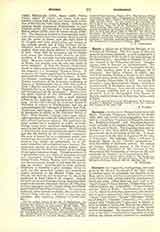

Eucarpia, a titular see of Phrygia Salutaris in Asia Minor. Eucarpia (Eukarpeia), mentioned by Strabo (XII, 576) and several other geographers, was situated on a road from Dorylaeum to Eumenia, between the Dorylaeum–Acmonia and Dorylaeum–Synnada roads, probably at the modern village of Emin Hissar, in the vilayet of Brusa. The imposing ruins, seen by Hamilton in 1837, have almost disappeared. Nothing is known about the history of the city. It struck its own coins from the time of Augustus till the reign of Volusianus. The bishopric, being a suffragan of Synnada, figures in the “Notitiae episcopatuum” until the twelfth or thirteenth century. Six bishops are known: Eugenius, present at the Council of Nicaea (325), Auxomenus in 381, Cyriacus in 451, Dionysius in 536, Constantine or Constans in 787 (not mentioned by Lequien), and Constantine in 879.
S. PETRIDIS

